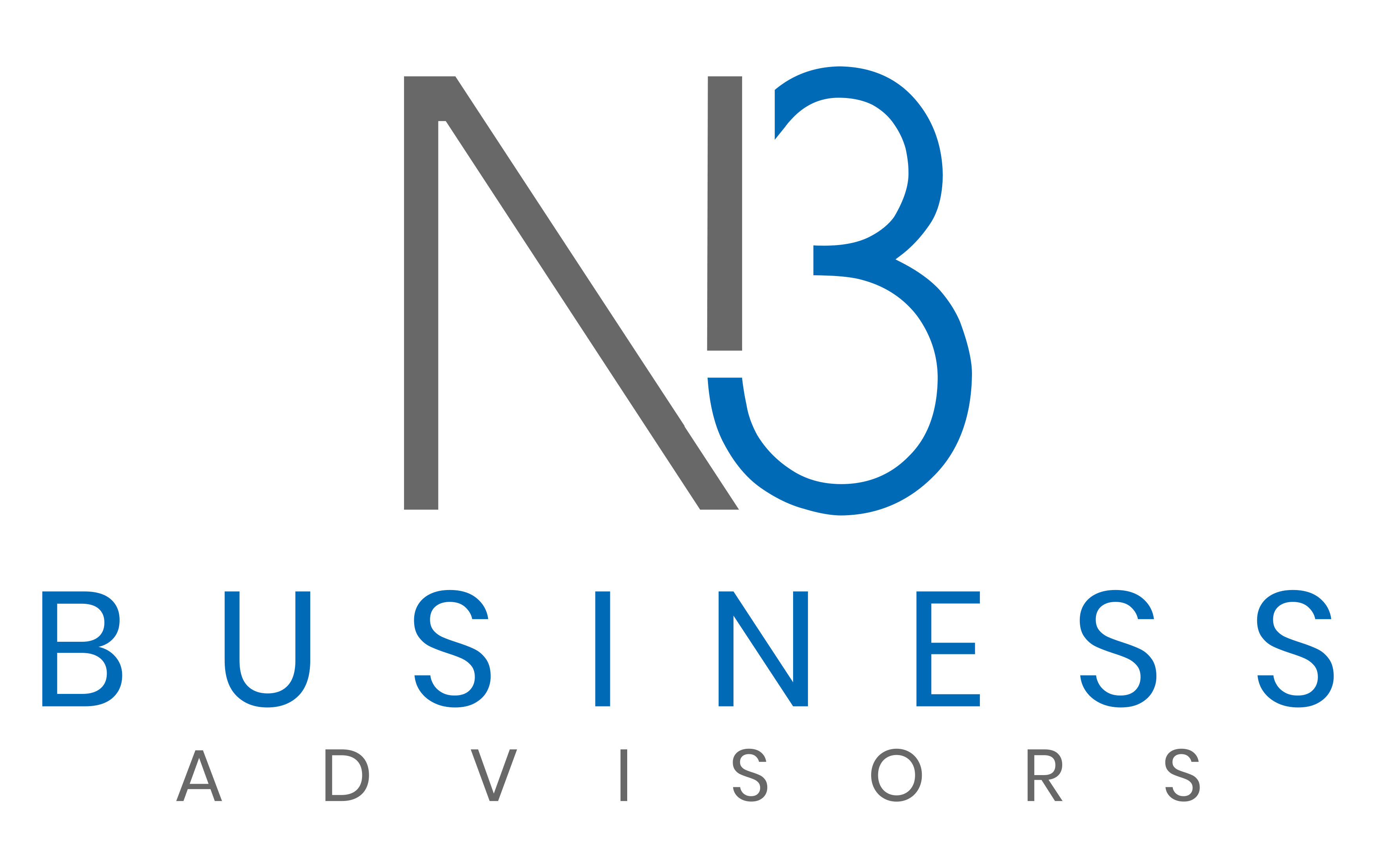Hey there, construction business owners!
Today, I want to chat about the metrics that matter most when it comes to building a successful construction business. As someone who’s been in the trenches of the construction and M&A world for years, I know how important it is to track progress in ways that genuinely move the needle. You’ve probably heard about Key Performance Indicators (KPIs) – those essential metrics that give you a pulse on the health of your business and where you’re headed.
At N3 Business Advisors, we’re big on data-driven decision-making. So, let’s dive into the KPIs that can help you optimize operations, improve profitability, and build a brand that stands out in the competitive construction market.
Why Are KPIs Important in the Construction Business?
Imagine driving without a dashboard – no speedometer, no fuel gauge. You might still make it to your destination, but you’d have no idea if you’re speeding or running out of gas. KPIs are like the dashboard for your business, giving you crucial insights to keep your company on track. And in a high-stakes industry like construction, where timelines, budgets, and quality control are all essential, having these KPIs front and center can be a game-changer.
With KPIs, you’re not just reacting to issues; you’re proactively managing them. You know where things stand and can make informed decisions that set you up for success.
Core KPIs for Construction Business Success
Alright, let’s get into the nitty-gritty. Here are the KPIs that can keep your construction business ahead of the game. These are broken down into categories to give you a comprehensive view of what to track.
1. Financial KPIs
Let’s face it – construction is a tough business, and financial health is everything. Here are a few key financial indicators to watch:
- Gross Profit Margin: This is a fundamental metric for any business, but it’s especially crucial in construction. Your gross profit margin tells you the percentage of revenue that remains after subtracting direct costs like labor and materials. A healthy margin indicates strong cost control and effective pricing.
- Cash Flow: Construction businesses often have long payment cycles, which can squeeze cash flow. Tracking cash flow regularly helps you stay on top of payments, minimize bottlenecks, and avoid running into liquidity issues.
- Overhead Percentage: Overhead costs can creep up if you’re not paying attention. Tracking your overhead as a percentage of total revenue keeps you mindful of expenses that don’t directly contribute to project completion, like administrative salaries, office rent, and utilities.
2. Project Management KPIs
The success of each project impacts your business’s reputation and profitability. Here’s what to monitor to ensure every project is on point:
- Project Completion Rate: Are your projects finishing on time? This KPI can highlight whether you’re effectively managing resources and timelines. Consistent delays may signal the need for process improvements or better scheduling.
- Labor Productivity: Measure productivity by tracking output relative to labor hours. This KPI helps you understand how efficiently your team works and whether you’re utilizing your workforce to its full potential.
- Change Order Frequency: Change orders are inevitable in construction, but too many can be a red flag. High change order frequency may indicate issues with initial project planning, communication, or scope management.
3. Safety KPIs
Safety isn’t just a priority; it’s non-negotiable. A single incident can cost your business financially and damage your reputation. Here are a few safety KPIs to keep your job sites safe and compliant:
- Injury Frequency Rate: Track the number of injuries per 100 workers. A high rate of injuries could indicate a need for better safety training or revised protocols.
- OSHA Recordable Incidents: For those operating in regions that follow OSHA standards, tracking recordable incidents ensures compliance and highlights areas needing attention.
- Near Miss Reporting Rate: Near misses are those close calls that could have been incidents. Encouraging and tracking near-miss reports helps you spot potential hazards before they become serious.
4. Customer Satisfaction KPIs
Word of mouth is powerful in construction. Satisfied clients bring referrals, so measuring their satisfaction is essential.
- Customer Satisfaction Score (CSAT): After project completion, ask clients to rate their satisfaction. A high score indicates you’re meeting or exceeding client expectations.
- Net Promoter Score (NPS): This KPI measures client loyalty and their likelihood to recommend your business. A strong NPS can be a powerful driver of organic growth.
- Repeat Business Ratio: If clients return to you for more projects, you’re clearly doing something right. This ratio gives insight into how well you retain clients, which is a significant success factor.
5. Operational KPIs
Efficiency isn’t just a buzzword; it’s a competitive edge. Here’s what to watch to make sure your operations are running smoothly:
- Equipment Utilization Rate: If you own machinery, track how often it’s used versus how often it sits idle. High utilization means you’re getting value from your equipment, while low utilization may signal a need for better scheduling or rental alternatives.
- Material Wastage Rate: Construction involves a lot of materials, and waste can eat into profits. Monitor wastage rates to ensure you’re using materials effectively and minimizing loss.
- Punch List Resolution Time: The punch list is a project’s final checklist before sign-off. Tracking how quickly you resolve items on this list can give insight into your finishing processes and client satisfaction.
Technology to Streamline KPI Tracking
In today’s world, managing all these KPIs manually is nearly impossible. Thankfully, there are technology solutions out there to make it easier. Here are a few types of software tools you might consider:
- Project Management Tools: Tools like Procore, Buildertrend, and CoConstruct help you keep projects on track, manage resources, and stay organized.
- Financial Software: QuickBooks, Xero, and Sage can simplify the tracking of financial KPIs, helping you manage cash flow, invoicing, and payroll.
- Safety Management Software: Platforms like Safesite or iAuditor help you track and document safety KPIs, ensuring compliance and providing safety insights in real time.
Building the Right KPI Dashboard
A KPI dashboard is essential to keep track of these metrics all in one place. It doesn’t have to be overly complicated; even a simple spreadsheet can work as long as it’s updated regularly. The dashboard should:
- Be easily accessible by key team members
- Include both high-level overviews and drill-down capabilities
- Highlight problem areas or trends that require attention
For those looking to create a more advanced dashboard, tools like Tableau, Microsoft Power BI, or Google Data Studio offer sophisticated data visualization options.
KPIs for Those Ready to Expand
If you’re aiming to grow your business or acquire another company, here’s some advice: tracking KPIs becomes even more crucial. When you’re considering an acquisition, whether buying the best construction businesses to be the boss or expanding into new regions, KPIs can show you if the business is truly profitable, well-managed, and sustainable.
Are you looking to buy a construction business in Canada? Want to know which province might be best suited for growth? I recently wrote a blog, “Best Provinces for Construction Business Growth in Canada,” that dives into the economic environments of each province, exploring where construction businesses have the best chances of thriving.
Wrapping It Up
Tracking the right KPIs can be a game-changer in your construction business. From financial health to safety and customer satisfaction, each of these KPIs tells you a story about where your business is thriving and where you might need to make some tweaks. And remember, it’s all about finding the balance between tracking enough data to gain insights without getting bogged down in too much information.
Whether you’re looking to optimize your current operations or thinking about expanding – either by taking on new projects or acquiring another company – having these KPIs in place will set you up for a smoother, more profitable path forward.
If you ever want to chat more about KPI tracking or if you’re interested in buying the best construction businesses, feel free to reach out. N3 Business Advisors is here to help you navigate the complexities of business growth in construction. Let’s build success, one KPI at a time.
Disclaimer:
Any information provided here is for informational purposes only. It should not be considered as legal, accounting, or tax advice. Prior to making any decisions, it’s the responsibility of the reader to consult their accountant and lawyer. N3 Business Advisors and its representatives disclaim any responsibilities for actions taken by the reader without appropriate professional consultation.

